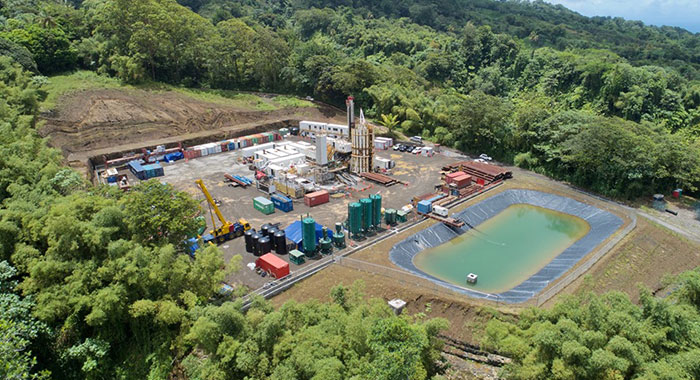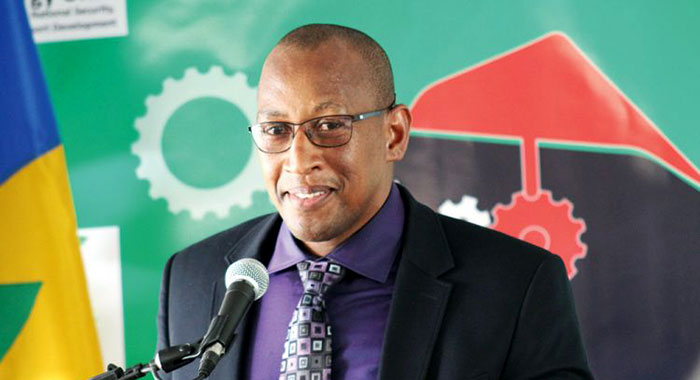The head of the St. Vincent Geothermal Project, says he is “cautious” in saying that the country can still see the generation of geothermal energy although the three wells have failed to produce the required permeability.
“I have to be cautious in how I answer these days,” Ellsworth Dacon, the project director, said on NBC Radio on Sunday.
He was responding to a question of whether Vincentians can assume that there is still the possibility of geothermal energy in St. Vincent.
“There are systems, closed loop systems that do not require permeability. The emerging technology demonstrates that that is possible and there are enhanced geothermal systems that are in existence without the use of permeability,” Dacon said.
“So we are speaking to some companies that have looked at the data. We have shared the data that we have had from drilling, from before, and during drilling, all the geology and they have reviewed the data and they have come back with confidence that we should be able to develop beyond a 10 megawatt.
“One company have even said they would be able to enhance up to 20 megawatts. So I want to cautious in saying it is possible based on the statements from the companies that we have had discussions with and we are proceeding on that basis,” Dacon said.
He noted that the project was fully financed and the US$92 million was secured up front.
The drilling started in early April 2019 on three production size wells and one reinjection well
“As you know and from what you read in the news, we did not get the permeability we are looking for. We found some heat, 250 degrees Celsius, which is good but the porosity of the rock, the flow of the water we needed to make it commercially viable, was not sufficient and as such, we couldn’t proceed with the development of the plant on the basis of the flow that we got from the drilling.
“So we have ordered the well to be demobilised since March 16, then you had the pandemic and now they are currently moving the rig because they have another drilling programme in Spain and we are now looking at other technologies to develop the geothermal resource.”

Dacon said it took St. Vincent and the Grenadines 20 years to get to the point where it could drill for geothermal energy.
“This is an opportunity that perhaps we would not get perhaps for more than 20 years from today. A lot went into this project; a lot of people were involved behind this project. We had the Government of Japan, through JICA; the government of the UAE, through the Abu Dhabi Fund; the Global Environmental Facility; the Green Climate Fund; the IDB, we have the Government of New Zealand, who acted as our consultants to review the work done by the scientist. We had — and I hope we are not leaving out anyone — we had DIFID; the European Union.
“So it should signal the level of confidence in the science, in the technical review, in the team, and the policy and the legal framework that was in place, and the government will. Everything went into the project; it was well executed. I would have been sitting here today wishing I could say to you [that] we had permeability and it could have been a sample project that could have been repeated throughout the world,” Dacon said.
He continued:
“It does not mean we were not successful in the project, in the execution of the project because we did not find the permeability we desired. We found the source…”
He said he had heard on radio that one could drill anywhere in the earth’s surface and find heat.
“I’m not disputing that if you drill below you won’t find it gets warmer. It will but you may not find 250 degrees Celsius at 2,700 metres. So it was science that found the resource.” “
Dacon said that in looking at the fracture you are looking for the faults in the Earth’s crust.
“And you have a hypothesis that maybe, based on the fracture, and this is based on the imaging after we removed the vegetation where this fracture lay, it gives an idea that this is the hypothesis, this is where we expect the permeability to be.”
He said there were several studies a well as scientists with experience all over the world “telling you that they really believe that – they were willing to put their money of US$25 million in a risky project like this, it shows the level of confidence and this is what brought the attention of the donors and agencies.
“So I really want to dispel any notion and I really wish that I don’t have to hear it anymore and I hope that everyone is listening, that the location, the selected location was the ideal location based on all the science, based on everything that went into it and there was review, there was a proper due diligence by the bank, by governments beyond St. Vincent — like I said, we had support from JICA and we had support from the government of New Zealand and experts from around the world and the objective of the project was always to lower the tariff to the consumer.
“And, with grants, we really would have been – it would have been a sweetheart project if we had today been saying we found permeability. I never disclosed what price we were looking at but the price that we saw based on the financial model was really one that would have been welcomed by most Vincentians.”
Some persons have suggested that the wrong site was chosen for the project and that it should have been built on the leeward side of the island.







Sir you have wasted people’s money and time. Solar panel would have been completed in less that 10 years. Even wind turbines would not have taken that long and you would have had results today.